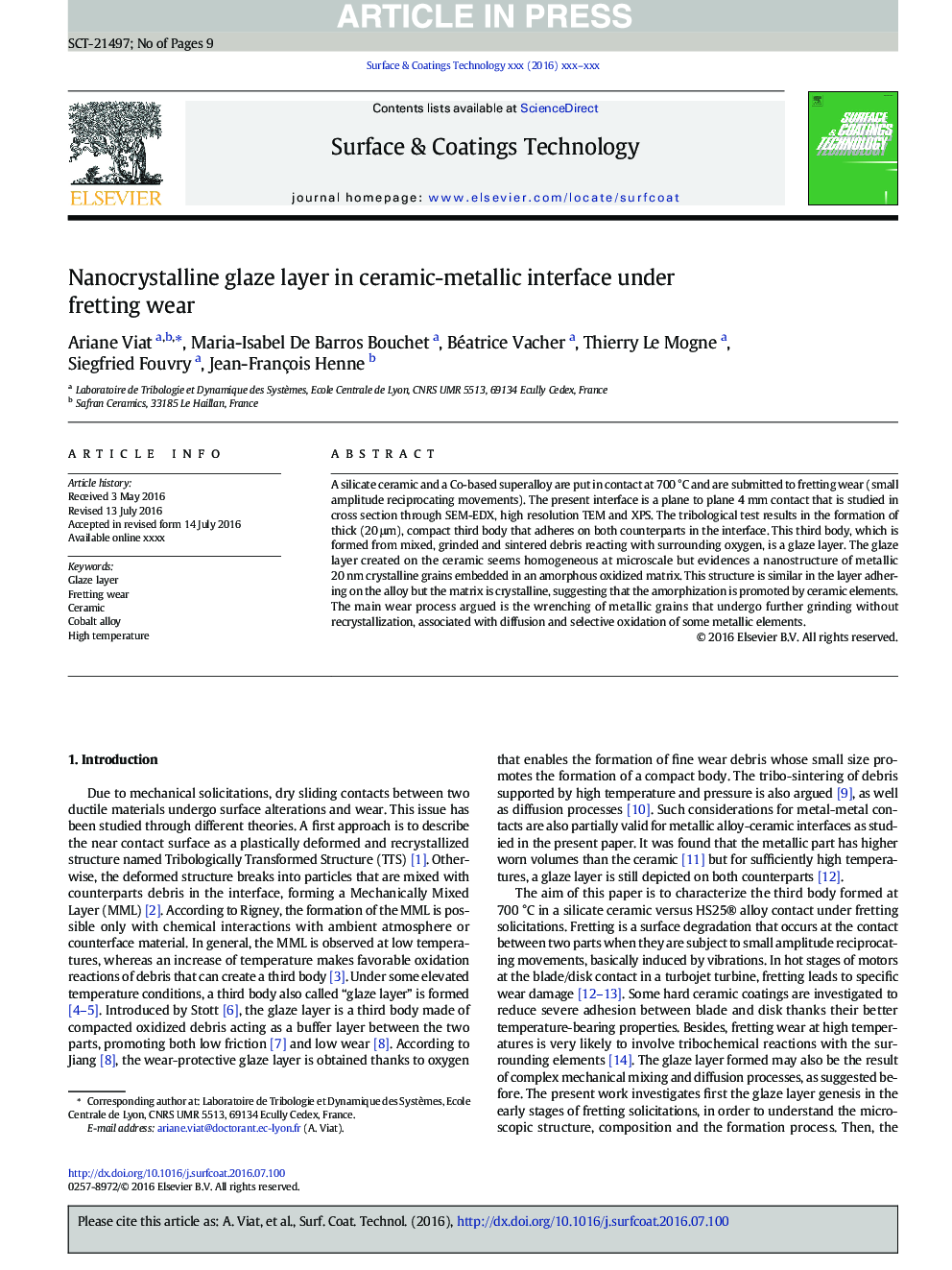| Article ID | Journal | Published Year | Pages | File Type |
|---|---|---|---|---|
| 5464908 | Surface and Coatings Technology | 2017 | 9 Pages |
Abstract
A silicate ceramic and a Co-based superalloy are put in contact at 700 °C and are submitted to fretting wear (small amplitude reciprocating movements). The present interface is a plane to plane 4 mm contact that is studied in cross section through SEM-EDX, high resolution TEM and XPS. The tribological test results in the formation of thick (20 μm), compact third body that adheres on both counterparts in the interface. This third body, which is formed from mixed, grinded and sintered debris reacting with surrounding oxygen, is a glaze layer. The glaze layer created on the ceramic seems homogeneous at microscale but evidences a nanostructure of metallic 20 nm crystalline grains embedded in an amorphous oxidized matrix. This structure is similar in the layer adhering on the alloy but the matrix is crystalline, suggesting that the amorphization is promoted by ceramic elements. The main wear process argued is the wrenching of metallic grains that undergo further grinding without recrystallization, associated with diffusion and selective oxidation of some metallic elements.
Related Topics
Physical Sciences and Engineering
Materials Science
Nanotechnology
Authors
Ariane Viat, Maria-Isabel De Barros Bouchet, Béatrice Vacher, Thierry Le Mogne, Siegfried Fouvry, Jean-François Henne,
